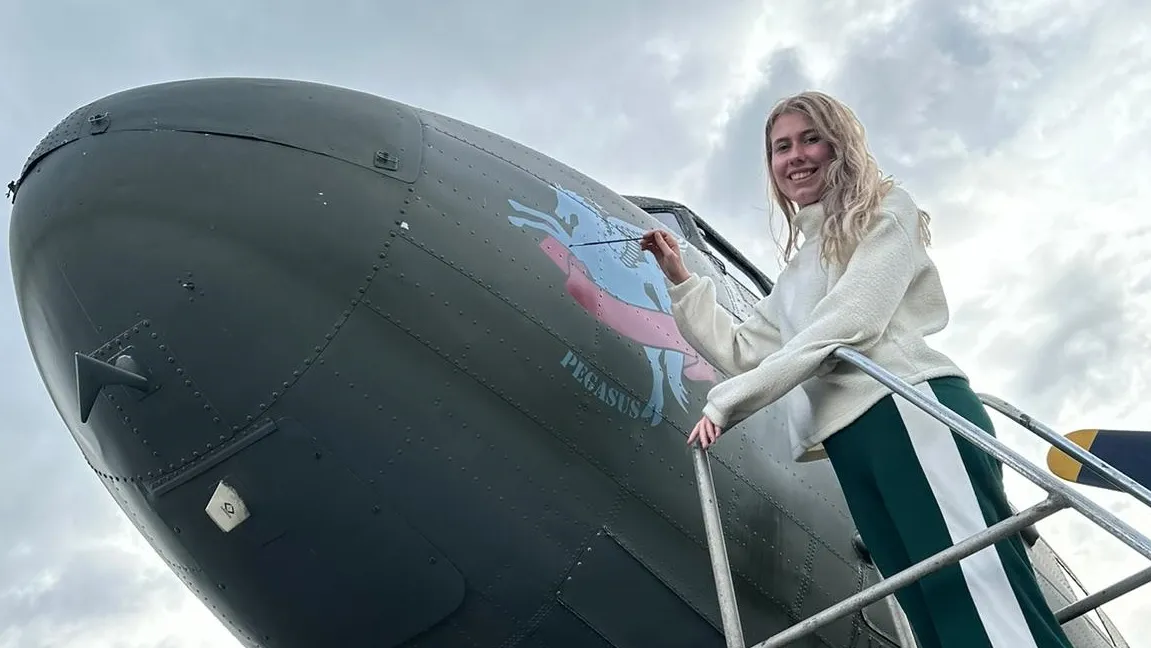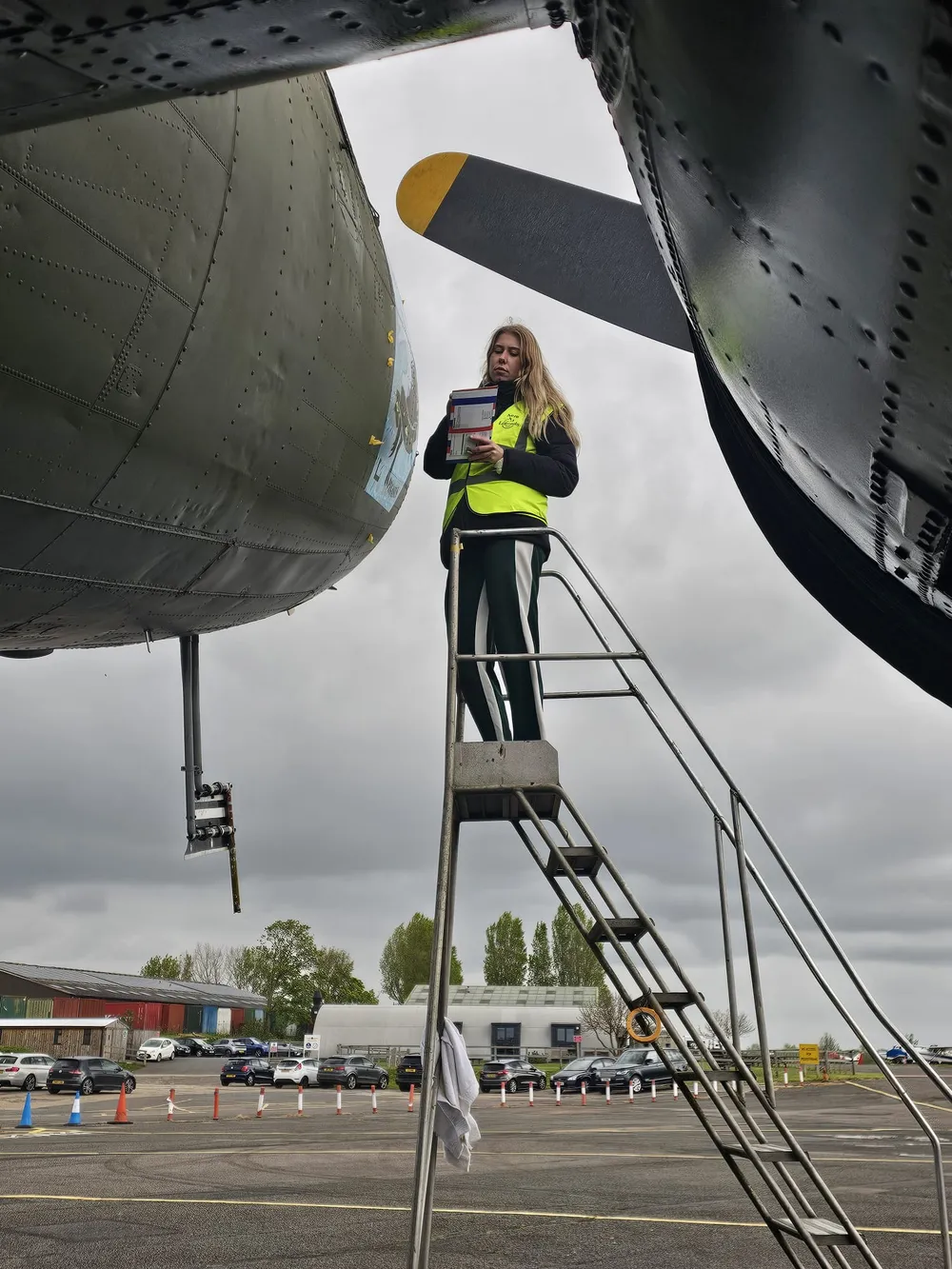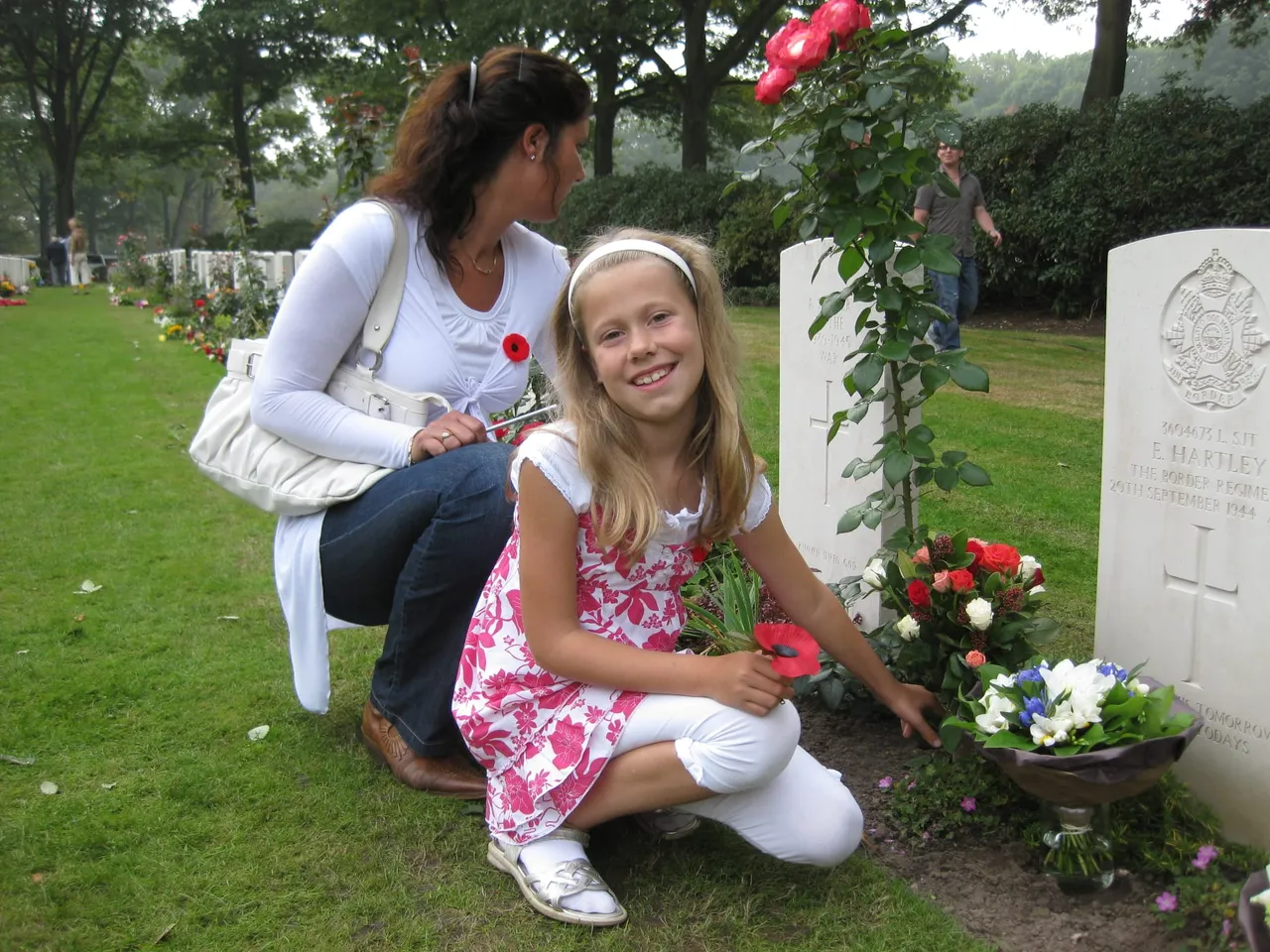Dutch nose art WW2 Dakota: The ghost of Arnhem

Since 1945, it has been a tradition for primary school children to lay flowers on the graves of fallen soldiers at the Airborne cemetery in Oosterbeek, The Netherlands. This commemoration ends every year with a fly past over the cemetery by a C47 Dakota.
Last year, when the Dakota that normally flies over the cemetery could not take off due to bad weather conditions,Aero Legendscame 'to the rescue'. They flew over the cemetery while thick fog hung over the entire community. During the ceremony everyone looked up to catch a glimpse of the Dakota and it was nothing more than a glimpse. Shrouded in the thick fog, the legendary aircraft could be heard but hardly seen. A special sensation for everyone who was present.
The daughter of Geoff Roberts, KSOB World War II veteran who has been visiting the Pas family in Oosterbeek for years, said it looked like 'the ghost of Arnhem'.
The Ghost of Arnhem
[caption id="attachment_100310" align="alignleft" width="300"]
That did not go unheard by Myrthe Pas. The 23-year-old young lady was once a flower child herself and has always felt involved in the Second World War, especially Operation Market Garden.
Now older than most of the young Allies buried in the cemetery, she designed a patch and nose art for the C47: Pegasus – The Ghost of Arnhem. The owner of the aircraft, which is privately owned, allowed them to apply this nose art to the aircraft because he thought it was beautiful.
Together with her father Wiljo, she travelled to England last week to paint her design on the plane as a tribute to all the brave men who served in the first airborne division during the Battle of Arnhem in the Second World War. The owner is so happy and proud of the story of the flower children, he also stood at the burial site during the commemoration, that he plans to bring several aircraft such as spitfires to the Netherlands for the commemorations around Market Garden 80.
View the photo serie by clicking on the arrow in the top photo.
Nose art
A Dutch piece of art such as nose art on a British Dakota is very unique. Nose art emerged during the First World War. Perhaps the best known are the shark snouts with the large row of white teeth that were painted on fighter planes during the Second World War. The Americans in particular used it a lot, the British, Canadians and Germans used it less. Nose art was actually not officially approved and that made it extra fun in the strict army. The aim of Nose art was to be recognisable as a group, but especially to recognise each other in the air. But later also to frighten the enemy, to 'take' home or a friend and for good luck.
Nose art was applied to the forward part of the fuselage. All kinds of images were used, often beautiful ladies, the well-known Pin-ups with charming names such as Blonde Bombshell, Miss Mitchell, Victory Jean, Piccadilly Lilly or Rose's Raiders, sometimes with rifles or pistols in hand and/or sitting on a bomb. Usually scantily clad and depicted sexy. But cartoons such as Popeye and Bugs Bunny were also often used. Also text painted in beautiful script, women's names and all kinds of slogans. The Gliders (gliders), for example, were sometimes provided with the slogan: 'Wot! No Engines?'.
Bombers were often also provided with the number of bombs they had dropped during the wars. This meant that every time they returned from a mission, the painter could get back to work making even more small bombs on the fuselage of all those bombers. So you could see from the number of bombs how many missions these planes had completed. Some were filled halfway up the fuselage or had multiple rows of dropped bombs. German swastikas were also painted for the number of enemy aircraft that had been shot down.
♦♦♦






Meest Gelezen

Update: Amy uit Oosterbeek is weer terecht

Folke Muller lijsttrekker voor SP Renkum voor de gemeenteraadsverkiezingen

De Zoomerij voor het derde jaar op rij uitgeroepen tot best presterende bibliotheek van Gelderland

Echtpaar Fokkeme-Bos viert hun 60-jarig huwelijk

Gelderse Vallei biedt nieuwe drinkadviezen voor patiënten met hoge productie bij ileostoma

